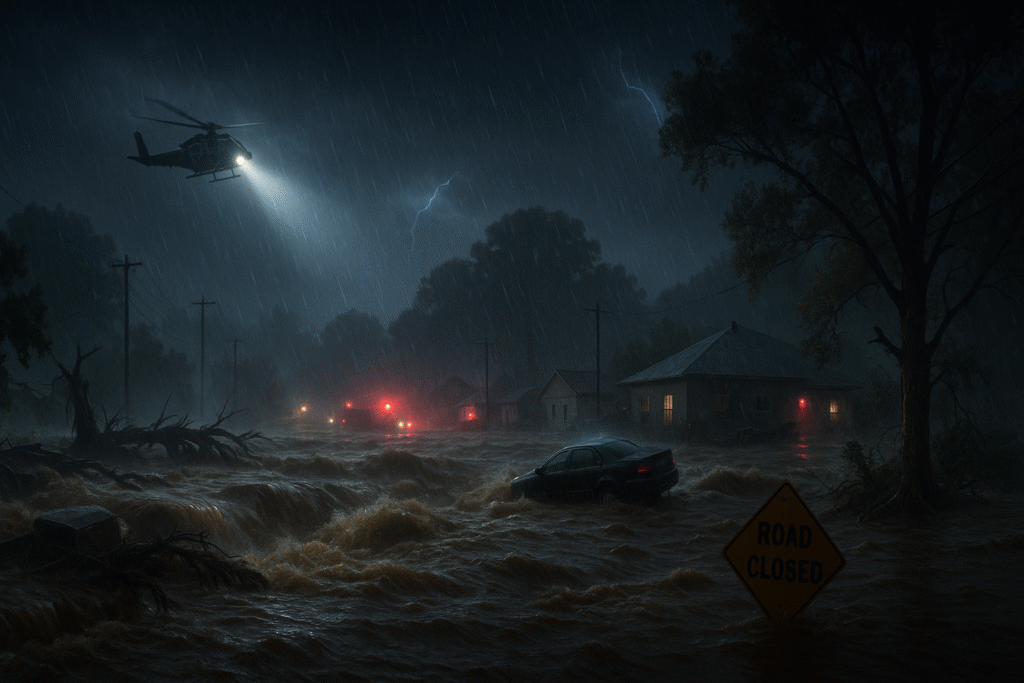
In the early hours of July 4, catastrophic flash flooding swept through central Texas’s Hill Country, especially along the Guadalupe River. Torrential overnight rains caused the river to surge dramatically, rising about 26 feet in just 45 minutes and overwhelming towns like Kerrville and Hunt.
This sudden flood led to at least 24 confirmed deaths and left dozens missing, including campers at a popular summer camp. Hundreds of emergency responders have been deployed, but the scale and speed of the flooding caught many residents and officials off guard, complicating evacuation and rescue efforts.
What happened?
The Guadalupe River experienced a historic and deadly flood after extraordinary rainfall pounded the region overnight. The river rose from about 7 feet to nearly 29 feet in just a few hours, inundating communities and sweeping away vehicles, property, and tragically, lives.
Many of the missing were children attending a summer camp near the river’s banks. Emergency teams have been working around the clock, deploying helicopters, boats, and ground crews in search and rescue operations.
Why did the flooding happen so quickly and severely?
Several factors combined to create this deadly flood:
- Extreme rainfall: Between 5 and 11 inches of rain fell in a short period over the Guadalupe River watershed, with some areas seeing up to a foot of rain overnight. The intensity far exceeded forecasts.
- Geography and river system: The Guadalupe River’s two main forks converged near Kerrville, and both were saturated simultaneously, causing the water to rise with unprecedented speed.
- Slow-moving storm and moist air mass: A tropical air mass and a stalled storm system dumped relentless rain on the same areas for hours.
- Flash flood nature: The region is prone to flash floods, but this event was unusually intense and rapid, leaving little time for warning or evacuation.
Why was the warning and response challenging?
The flooding occurred overnight, mostly before dawn, when many people were asleep and unable to respond quickly. Although flood watches and warnings were issued, the sheer speed and volume of flooding exceeded expectations and radar predictions.
Kerr County lacks a dedicated overnight warning system, which could have alerted residents more effectively. Roads quickly became impassable and cellphone service was disrupted, making communication and rescue coordination even more difficult.
What is the current situation?
Search and rescue operations continue with hundreds of personnel, drones, and helicopters deployed. Authorities have urged residents to avoid the affected areas and stay indoors.
Evacuations have been ordered in vulnerable communities, and emergency shelters are open. Officials warn that additional rain and flooding remain possible in the coming days, with flash flood watches extended across parts of Texas.
What does this mean for Texas?
This disaster highlights the vulnerability of Texas Hill Country to extreme weather events, which are being intensified by climate variability. It underscores the urgent need for improved early warning systems, emergency preparedness, and community awareness to reduce risks from sudden flash floods in the future.



